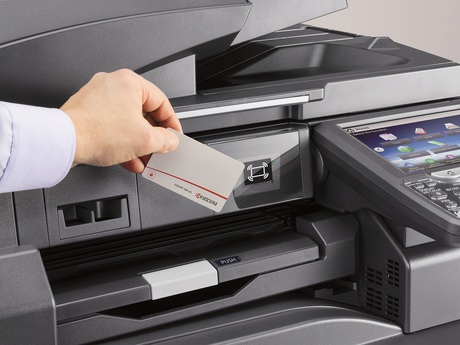Protect yourself from your printer
By George Kharoufeh, Product Marketing Manager, Kyocera Document Solutions
Tuesday, 25 November, 2014

Your printer could be a gateway to your confidential data.
Data protection is a high priority for businesses in Australia, and it can be very easy to overlook the threat that your printer can pose to office security. Yet however unlikely it may seem, printers can be a serious security liability if you don’t take the necessary precautions.
The top three threats to your office printer typically include unauthorised access to the device via a network, tapping of information in transit over a network and leakage of information from the device’s hard drive.
However, print service providers are constantly updating their software and operations to ensure that Australian businesses don’t need to fear their printer.
Here are a few tips to handling your print needs securely:
Protect the network
It’s estimated there are nearly 30 million multifunctional printer (MFP) devices in offices around the world, and most are connected to a network. This makes them just as susceptible to security risks as a typical PC.
Much like any other device in the office, printers need to be connected to a private network otherwise you risk opening up your device to external intruders.
Additionally, you can limit the communications within your network and control who has access to your printer.
Avoid leaks
When scanning, copying or printing (stored) secure documents on an MFP it is important to remember that this data is temporarily stored on an internal hard drive. This data can remain on the hard drive until it is overwritten, meaning that it can be retrieved. Unauthorised access to this data could result in leakage of information.
To prevent this, some modern MFPs are fitted with a HDD overwrite-erase and encryption function that disables third parties’ abilities to read data such as user settings, device information and image data that has been stored on the hard drive.
Enterprise MFPs handle large volumes of data. What happens in three to five years when the machine needs to be upgraded? The data isn’t necessarily deleted and can be discovered if you choose to sell your devices second-hand.
Before a printer changes hands, ensure the hard drives are wiped of existing data in line with ISO standards.
Don’t leave unattended
The most common security issues occur when a print document is not accounted for. Typically this will happen in a shared office environment when a print job is sent across departments. The risk here is the document goes missing from the output tray before it can be collected or can be viewed by a third party at the device.
Cost recovery applications are one of the best solutions to this. They require each employee to authorise a print job to be released from the device once it’s been sent, by entering a security code or personal swipe card before it can be printed.
Overall, it’s important to think of your printer as a significant part of your business IT structure and manage and protect it accordingly. Taking precautionary steps to secure your network and introducing printing protocols will help stop your MFP becoming a gateway to your confidential data.
How to harness AI to advance cybersecurity
Organisations that prioritise AI-enabled security and a culture of continuous learning...
Solving the IoT attack surface challenge: a practical playbook for IT managers
As IoT environments get more complex, adopting zero-trust architectures to verify every device...
Defending against AI-powered cyberthreats
Improving cyber resilience is no longer about perimeter defence or reactive patching, but...







